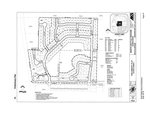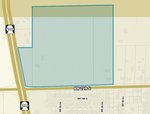

A hearings examiner for Battle Ground gave preliminary approval of a 146-lot subdivision on the city’s north side following a hearing in the city council chambers Dec. 5.
Hearings Examiner Joe Turner — an independent lawyer contracted by the city — heard testimony and reviewed documents pertaining to a planned development involving three parcels totaling about 43.2 acres. The single-family detached housing development is located at the corner of State Route 503 and Northwest 25th Avenue close to the city’s northernmost boundary.
Battle Ground Planning Supervisor Sam Crummett said the parcels in question are currently zoned for residential use at a density of five lots per acre. About 12.5 acres of the project would be open space in the center, with much being protected wetland. Crummett said the city has also required a perimeter trail to be built along the wetland.
The developer will make frontage improvements along Northwest 25th Street which would include a center median, Crummett later added.
Several residents near the project area testified, mostly voicing concerns over impacts on their property or nearby roads.
Leonard Crawford, a resident of the Golden Hills Estates subdivision to the south of the proposed development, brought up that the neighborhood had submitted a letter to the city regarding their concerns, specifically on traffic impacts.
“Please understand, we are not trying to shut this subdivision down,” Crawford said. “but we do have some safety concerns.”
Crawford noted that currently, traffic backs up from the 503/25th Street stoplight past his residence to the east. His concern is that the increased traffic from nearly 150 new homes would cause motorists to cut through the neighborhood to head south to Onsdorff Boulevard to head West.
“We’ve already got people cutting through our subdivision,” he said.
Crawford said Golden Hills Estates residents were also concerned over noise, explaining that project engineers said in a response to concerns that a study on those impacts would be outside the scope of the project.
Fellow Golden Hills Estates resident John McClintock further testified regarding the current traffic that residents feel will only get worse with the new development.
“Just about on a daily basis, especially ... during rush hour, that intersection is insane,” he said.
McClintock noted the speed limit in the subdivision was 20 miles per hour, but “people don’t do 20 mph” when cutting through.
Other residents noted that they had to modify travel plans based on the congestion Northwest 25th Street currently faces, having to backtrack to Onsdorff Boulevard to get onto the state route.
Regarding traffic in Golden Hills Estates, city engineer Marit Ernst said that the subdivision was developed prior to the city’s adoption of “traffic calming” policy — measures like speed bumps.
Though he understood traffic cut-through was a valid concern of nearby residents, Turner said it was largely an enforcement issue, noting that Crummett had said the city currently didn’t have any funds pointed toward a traffic calming project to help.
Regardless, it wasn’t the applicant’s legal responsibility to fund any traffic calming work.
“This development is not creating the (problem). They’re adding to the problem, but the problem exists now,” Turner said.
Bill Farley, a traffic engineer working on the development, said that although recent studies have shown the 503/25th Avenue intersection is functioning adequately given the current and potential traffic, “likely in the near future it will need a left-turn lane” on the westbound approach.
Following testimony, Turner said he felt he would be able to approve the subdivision proposal. In drafting his final findings Turner said he would look at traffic concerns and the applicant’s analysis, as well as what state laws regarding noise would be applicable to the project.